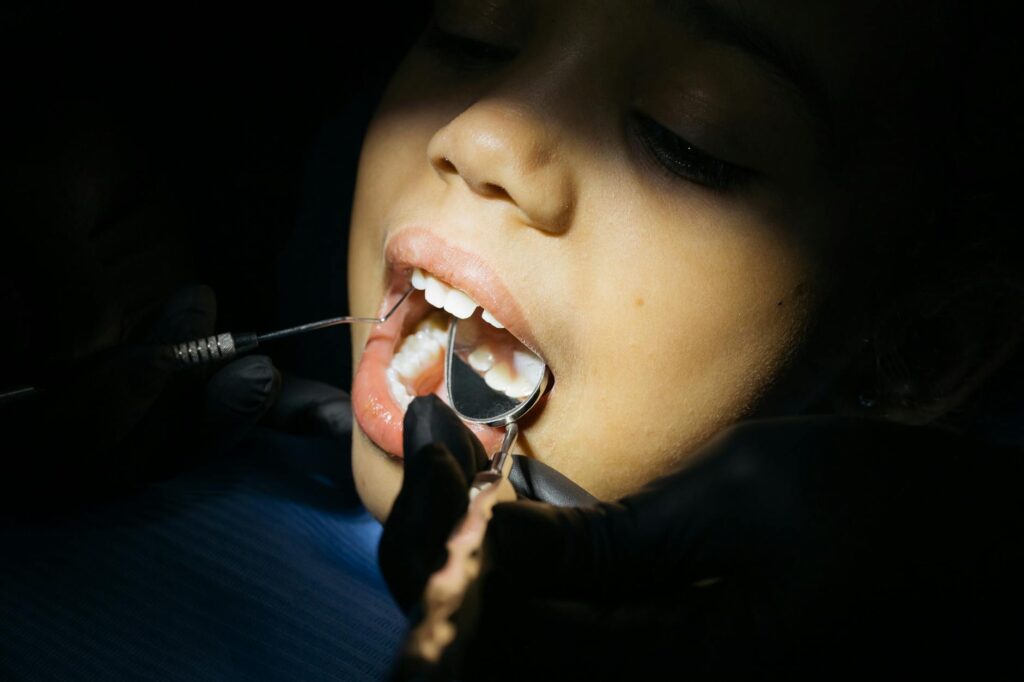Table of Contents
Introduction
If you’ve recently had a root canal or are scheduled for one soon, you might be wondering: “Can I eat on root canal treated teeth?” The short answer is yes, but with some important considerations. As dental professionals, we often hear this question from patients who are unsure about how to care for their teeth after this common dental procedure.
Root canal treatment is one of the most effective ways to save a damaged or infected tooth, with over 15 million procedures performed annually in the United States alone. Understanding the healing process and proper aftercare can significantly impact your comfort and the success of your treatment.
Understanding Root Canal Treatment
Before discussing eating habits after a root canal, it’s important to understand what happens during the procedure.
What Happens During a Root Canal?
During root canal therapy, your dentist or endodontist will:
Take the first step to a better Oral health!
Get tips on Oral health and discover ways to improve your Dental health. Sign up today
- Create an opening in the crown of your tooth
- Remove the infected or damaged dental pulp (the soft tissue inside your tooth)
- Clean and shape the root canals
- Fill and seal the canals with a biocompatible material called gutta-percha
- Place a temporary filling to protect the tooth until a permanent restoration can be placed
What Root Canal Treatment Doesn’t Address
While root canal treatment effectively cleans the inside of your tooth, it’s crucial to understand that infection may still exist beyond the root apex (tip of the root). This area cannot be directly reached by root canal instruments and must be cleared by your body’s immune system.
This residual infection explains why some patients experience discomfort for days or even weeks after treatment. Your body needs time to heal these tissues completely.
Eating During Root Canal Treatment
Why You Should Avoid Chewing on the Treated Tooth
During the course of your root canal treatment (which may require multiple appointments), it’s advisable to avoid chewing on the tooth being treated. Here’s why:
- Ongoing Infection: The periapical tissues (tissues surrounding the root tip) may still be infected and sensitive
- Temporary Restoration: Between appointments, your tooth may have a temporary filling that isn’t designed to withstand significant chewing forces
- Healing Process: The gap between appointments allows time for healing – chewing on the tooth can disrupt this process
- Risk of Fracture: A tooth undergoing root canal treatment is more vulnerable to fracture until it receives its final restoration
Continuing to bite on a tooth that’s undergoing treatment can traumatize already inflamed tissues, potentially prolonging the infection and causing significant pain.
Eating After Root Canal Completion
The First Week Post-Treatment
Even after your root canal procedure is complete, it’s wise to avoid chewing on the treated tooth for approximately one week. Here’s why:
- Residual Inflammation: As mentioned earlier, infection and inflammation beyond the root tip need time to resolve
- Immune Response: Your body’s immune system is still actively clearing remaining bacteria from the periapical tissues
- Sensitivity: The tooth and surrounding structures may remain sensitive to pressure
- Final Restoration: In many cases, you’ll still need to return for placement of a permanent crown or filling
How to Know If Infection Persists
Pay attention to your symptoms to gauge healing progress:
- Pain on Biting: If you experience sharp pain when biting down on the treated tooth, this may indicate persistent infection
- Swelling: Noticeable swelling near the treated tooth suggests ongoing inflammation
- Prolonged Sensitivity: While some sensitivity is normal, severe or increasing sensitivity could indicate a problem
- Discomfort at Rest: Pain that occurs even when not using the tooth may signal continued infection
What to Eat After Root Canal Treatment
Recommended Foods
During the healing period, consider sticking to:
- Soft Foods: Yogurt, applesauce, mashed potatoes, smoothies
- Room Temperature Items: Extremely hot or cold foods may trigger sensitivity
- Nutritious Options: Protein-rich soft foods like scrambled eggs, cottage cheese, or fish
- Well-Cooked Vegetables: Steamed to the point of softness
- Soups and Broths: Lukewarm, not hot
Foods to Avoid
Steer clear of:
- Hard Foods: Nuts, hard candies, raw vegetables, ice
- Chewy Foods: Bagels, tough meats, gummy candies
- Sticky Foods: Caramel, taffy, chewing gum
- Crunchy Foods: Chips, popcorn, crackers
- Acidic Foods: Citrus fruits, tomato-based products
- Spicy Foods: These can irritate sensitive tissues
When to Return to Normal Eating
Most patients can gradually return to their normal diet within 1-2 weeks after treatment completion, depending on:
- Resolution of sensitivity
- Absence of pain when applying pressure to the tooth
- Placement of final restoration (crown or permanent filling)
Always follow your dentist’s specific recommendations for your case, as healing times vary between individuals.
When to Contact Your Dentist
While some discomfort after a root canal is normal, certain symptoms warrant contacting your dental professional:
- Persistent Pain: Pain lasting more than 2 weeks after treatment
- Severe Swelling: Significant or spreading swelling of the face, gums, or neck
- Uneven Bite: If your bite feels unbalanced or the treated tooth feels “higher” than others
- Lost Temporary Filling: If your temporary restoration comes loose or falls out
- Allergic Reactions: Unusual rash, itching, or other signs of allergic response
Root Canal Success Rate and Potential Complications
Root canal therapy has an impressive success rate of approximately 95%. However, in rare cases, complications can occur:
Possible Reasons for Root Canal Failure
- Missed Canals: Some teeth have additional canals that may be overlooked
- Inadequate Seal: Incomplete sealing can allow reinfection
- Crack or Fracture: Undetected cracks in the tooth can lead to persistent problems
- Complex Anatomy: Unusual root structure can complicate treatment
- Delayed Restoration: Postponing the final crown or filling can lead to recontamination
Treatment Options for Failed Root Canals
If your root canal doesn’t resolve your symptoms, your dentist might recommend:
- Retreatment: Performing the root canal procedure again
- Apicoectomy: A surgical procedure to remove the tip of the root and surrounding infected tissue
- Extraction: In some cases, removing the tooth may be necessary, followed by replacement with an implant, bridge, or denture
Prolonging the Life of Your Root Canal Treated Tooth
To ensure your treated tooth remains healthy for years to come:
- Complete the Restoration: Don’t delay getting your permanent crown or filling
- Maintain Good Oral Hygiene: Brush twice daily and floss regularly
- Regular Dental Checkups: Visit your dentist every six months
- Avoid Excessive Force: Be cautious with very hard foods even after complete healing
- Wear a Nightguard: If you grind your teeth, a custom nightguard can protect your dental work
Conclusion
Root canal treatment is a highly effective procedure for saving infected or damaged teeth. While you can eventually eat normally on a root canal treated tooth, giving it time to heal is crucial for long-term success.
By following your dentist’s advice regarding eating habits after treatment, you’ll help ensure the best possible outcome. Remember that temporary dietary adjustments are a small price to pay for saving your natural tooth, which can continue to function properly for many years to come.
If you have questions about your specific situation, don’t hesitate to contact your dental professional for personalized advice.
FAQs About Eating After Root Canal Treatment
Q: When can I eat after a root canal procedure?
A: You can usually eat once the numbness from the local anesthetic has worn off, typically 2-3 hours after the procedure. However, you should avoid chewing on the treated tooth.
Q: How long should I wait before eating hard foods after a root canal?
A: It’s best to avoid hard foods on the treated tooth for at least 1-2 weeks after treatment, and ideally until your permanent restoration is placed.
Q: Can I drink hot coffee or cold beverages after a root canal?
A: It’s advisable to avoid extreme temperatures for the first few days as your tooth may be sensitive. Lukewarm or room temperature beverages are preferable.
Q: Will eating on my root canal treated tooth damage it?
A: Eating hard foods too soon after treatment can potentially damage the tooth or disrupt the healing process. Follow your dentist’s specific recommendations.
Q: Why does my tooth still hurt when I bite down after a root canal?
A: Pain on biting after a root canal often indicates persistent inflammation in the tissues surrounding the root tip. This should gradually improve within days or weeks.
Q: Do I need to chew on the opposite side forever after a root canal?
A: No. Once your tooth has healed and received its permanent restoration, you should be able to chew normally on it again.
Q: Is it normal for my treated tooth to feel different when eating?
A: Some patients report that a root canal treated tooth feels slightly different when chewing. This is usually normal and doesn’t indicate a problem.
Q: Should I eat before my root canal appointment?
A: Yes, eating a normal meal before your appointment is generally recommended since you may need to limit what you eat immediately afterward.
This article is for informational purposes only and does not constitute professional dental advice. Always consult with your dentist about your specific situation and follow their recommendations for post-treatment care.
- Steiner’s Cephalometric Analysis – Free cephalometric analysis - June 7, 2025
- COGS CEPHALOMETRIC ANALYSIS – FREE TO USE - June 7, 2025
- Can You Eat on Root Canal Treated Teeth? Everything You Need to Know - May 18, 2025



